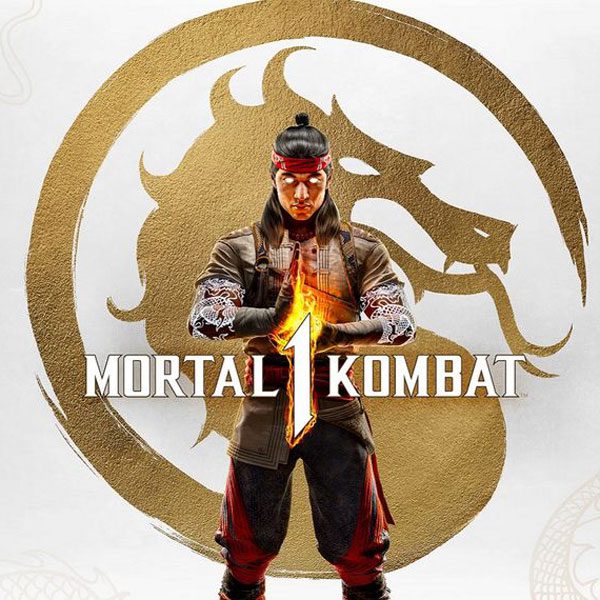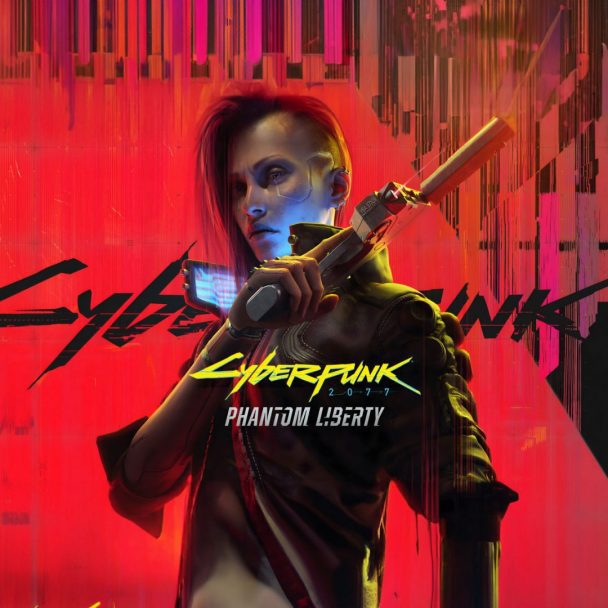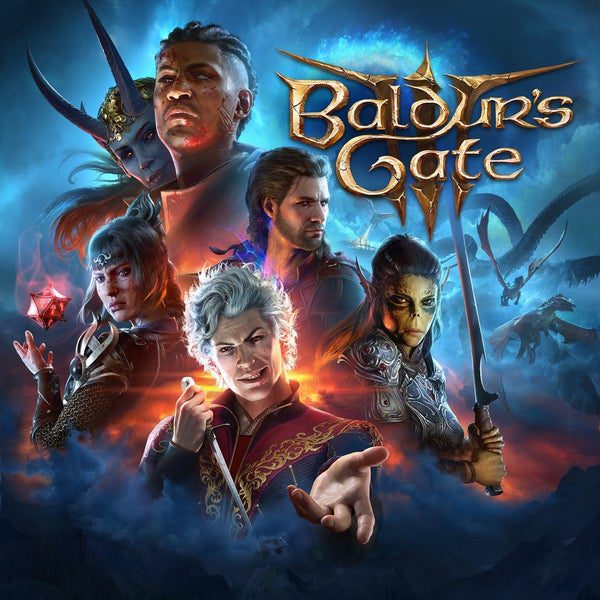“I don’t recommend quitting your day job to anyone these days,” says Jordi de Paco with a heavy sigh.
De Paco is no newcomer to the erratic world of independent game development, having worked on dozens of prototypes and multiple commercial releases over the years. But while his career has had ups and downs, he sees 2018 as the most challenging year yet for small teams.
“Everyone can make games, but be realistic. … It used to be that you could do something that nobody had ever seen before, or you could do something familiar really well. Now, it has to be innovative and have incredible quality.”
De Paco says that his studio Deconstructeam managed to make a profit just off the pre-orders for its first game, Gods Will Be Watching, back in 2014. For its latest game, a 2018 cyberpunk adventure called The Red Strings Club — which received floods of enthusiastic tweets and positive reviews — sales have only started to slip into profit now, many months after its release.
And it’s the exception — the game that’s been able to make it work.
Like a lot of game developers, de Paco sees the daily avalanche of games crashing onto online marketplaces such as Steam as a severe threat to his livelihood. “I think that if we released Gods Will Be Watching today, it would’ve failed,” he says, “because it used to be 20 games a week on Steam, and now it’s 20 games a day.”
By de Paco’s count, there are now hundreds of indie studios sprouting up all around his native Spain, and only 10 of them are actively turning a profit off their games. He describes a private developer group chat on the messaging platform Telegram that illustrates the trevails of chasing the misty specter of building your dream game.
“It’s basically a lot of people complaining about not being able to make it, and being envious of other developers and letting their frustrations go,” de Paco says. “All of the developers I know in Spain, it’s something they fear. When they release a game, they sell 500 copies on Steam, if they’re lucky.”
The group’s name says it all. They call it the “indiepocalypse.”
A saturated market
Over the past decade and change, the number of video games on the market has increased exponentially. Front and center, Steam has surmounted its humble origins and transformed into a behemoth of capital and the port of call for all of PC gaming. Meanwhile, console storefronts like the Nintendo eShop aren’t far behind. For independent developers struggling for eyeballs against blockbuster mega-franchises like Assassin’s Creed and Call of Duty, it’s easy to feel like the deck is stacked against them from the start. But the exponential growth of indie games on Steam has tightened the vise against them even further, making it harder to stand out in an ever-crowding market.
The weekly trickle of games flowing into Steam has surged into a roaring river, with the number of games on the platform nearly doubling every year from 2014 to now — 1,772 that year, 2,964 in 2015, 4,207 in 2016, and 7,672 in 2017, according to Sergey Galyonkin of SteamSpy, a site that uses a quickly vanishing trove of public data to estimate the sales of games on the platform. So far in 2018, there have been over 6,000 games released on Steam; the majority of them have sold fewer than 500 copies.
Prior to the summer of 2017, the Nintendo Switch’s eShop saw an influx of five or six games a week at most; now, that number has multiplied by a factor of four or even five, according to Eurogamer, as studios hungry for sales seize the opportunity of a fresh platform.


In the mobile market, the situation is even more dire. After years upon years of unprecedented growth, Apple’s App Store market grew so crowded that analysts reported almost a 30 percent decrease in the volume of new submissions in 2017. The less curated Google Play Store experienced no such drop, growing at a rate of 17 percent year-on-year — a possible side effect of Apple’s more aggressive abuse-deterrence policies toward app makers. Even with these deflated numbers, however, both platforms receive hundreds of new arrivals per day, if not thousands.
As the daily deluge of games continues to pour into these disparate storefronts — and many others — developers of all sizes are forced to reckon with the debilitating effect that the crowding shores are having on every level of development, from solo developers building 8-bit dreams in their garages to AAA behemoths cranking away at massive shared worlds. But while enthusiastic hobbyists might simply return to their day jobs if their indie dreams stay unfulfilled, the scale of big-budget games spirals ever skyward, meaning that more and more employees may lose their jobs if the studio’s one big bet doesn’t pan out.
“The market’s hugely different now from when I started,” says Todd Hollenshead, the former president and CEO of the breakthrough shooter factory id Software, who recently joined indie studio Nerve Software. “Now, a big publisher like Ubisoft would look at a game that sells only a couple million units — which is more than what Doom and Quake sold — as something not worth their time. I was the 13th employee at id; I was the 10th employee at Nerve. The possibilities are very different. Today, you can’t make a game that moves the needle for those guys without less than a hundred, 200 people. The costs are just astronomical.”
In the wake of these changes, some studios have developed novel strategies to stand out from the pack, such as directing their own unorthodox marketing campaigns, or targeting their output directly to the current crop of cachet-wielding influencers who blanket the airwaves with gaming content every day. Some cling to the traditional mantra: Stay within your comfort zone, keep up a steady stream of sequels, and stick as close as you can to an established publisher. But others, stung by the fear of financial failure, have taken more drastic measures.
Changing gears
As competitors spring from the woodwork in every genre, some studios that cut their teeth on less popular genres have found themselves galloping toward more populated pastures, eager to elbow in on the next hot trend. But while it’s certainly easier to whet the appetites of streamers and other notables by capitalizing on the game-of-the-now, such a transition comes with its own set of perils for both freshly minted newcomers and surly veterans alike.
When Finnish studio Housemarque released a twin-stick shooter called Nex Machina into the wilds of Steam in 2017, it didn’t exactly expect the game to to set tills alight. Even with those lowered expectations, however, the team behind the acclaimed defend-’em-up Resogun found itself shocked at the lack of impact that the Housemarque name seemed to have on the droves of consumers scrolling through Steam every day. When the sales numbers finally trickled in — Housemarque declined to discuss specifics for this story, but SteamSpy and this recently patched achievement leak puts the number slightly below 100,000 copies sold as of summer 2018 — the mood was somber, with the studio’s head of publishing, Mikael Haveri, describing it as “devastating.”
“It was a shock,” he says. “We had to come back to our senses and realize that we had to figure out something else at this point.”
“To a certain extent, we were blind jumping in,” he says. “We never really considered the commercial viability of a twin-stick shooter in 2017. We didn’t even know how to start that conversation with a publisher. So, we considered it from a pure artistic perspective. This was the first IP we actually own and created, and the publishers generally hold onto the IPs we work on, so we saw a possible venue to cut out the middleman and do everything for ourselves, and make a little more money in the process.”
Haveri describes the pre-2017 Housemarque as a studio that eschewed grand strategy for the pure impulse of a twitch action fan. True to form, Nex Machina emerged from the company’s long-held desire to create “the ultimate Robotron game,” just like how Resogun aimed to one-up the classic Defender. But while the studio succeeded in capturing the spirit of the arcade — even roping in twin-stick pioneer Eugene Jarvis for the ride — Haveri says that there are simply too many small developers churning out quality games in that style and genre for Housemarque’s neoclassical approach to support a studio of its scale.
Four months after the news of the game’s subpar commercial performance, CEO Ilari Kuittinen published a surprise announcement on Housemarque’s website with a headline that blared the now-infamous phrase “ARCADE IS DEAD,” declaring that the team’s arcade niche had failed to recoup the sales that the mid-sized studio needed to survive. While Haveri describes the provocative post as “a bit of BuzzFeed-y clickbait,” he says that he views the company’s shift in focus as the first step toward a bold new image, bolstered by less radical tactics like capturing the attention of Twitch streamers and other influencers prior to launch, as well as communicating a single unique mechanic that defines a game rather than a laundry list of unclear ideas.
Since Housemarque’s public departure from the jumble of old-school genres that constitute the ever-nebulous “arcade” label, the team has shifted its focus to an entirely new vein of action game: the upcoming Stormdivers, a fast-paced multiplayer third-person shooter that utilizes showstopping environmental effects to shake up the ever-growing battle royale genre. While Haveri is enthused by this market-driven concept, he admits that trying to break into the ultra-saturated competitive shooter field, where titans like Epic’s Fortnite and Blizzard’s Overwatch continue to eclipse the spotlight, remains a risky proposition.
This sense of developing a potential market first and letting the ideas follow is echoed by Dodge Roll, the developers behind Enter the Gungeon, a light-hearted but wrist-snappingly difficult roguelite that takes a songbook’s worth of cues from Edmund McMillen’s The Binding of Isaac. While game director Dave Crooks is thankful for the millions of sales, he says that the fiendish top-down Gungeon isn’t necessarily in the genre that the four-man team first set out to make — when they got laid off from EA Mythic following a studio closure, they had discussed making a more traditional platformer in the vein of McMillen’s other breakout hit, Super Meat Boy.
“It started as a joke name to a game,” he says. “And then once we thought about it, it suddenly seemed like a good idea, and a better way to make money than a platformer. We really like platformers, and I would personally play a platformer over something like Gungeon on the store, but when we sat down to design it, we thought, ‘Man, how do you even make a platformer after Super Meat Boy? They have 350 levels. How did you even compete with that?’ Well, it turns out that was Celeste, but it took awhile to figure that out, huh?”
Designing for the streamer crowd
This isn’t to say Gungeon garnered the sort of pre-release hype that the game’s publisher, Devolver, expected. To Crooks’ mind, the only reason that Gungeon managed to rocket its way to the top of the charts was the sudden realization that streamers were poised to embrace the game with unrivaled vigor, along with the legions of roguelike fans slavering for a stiff challenge of dexterity and wit.
“Once the game was out there, we started talking to the bigger Isaac streamers pretty regularly,” recalls Crooks. “Somebody would walk up to me at PAX and say, ‘Yo, Admiral Bahroo told me that this is the game to play at PAX.’ Well, to me, I just said, ‘Who the fuck is Admiral Bahroo?’ But it turns out that he’s this huge streamer. And someone else walks up and says, ‘People are calling this the next Isaac.’ And I thought, ‘Well, that’d be great!’ It even changed how we developed the game. … The Isaac fans wanted more items to interact with the crazy guns we’d added to the game. The single most critical component of our success was catching the attention of big streamers. That’s what made our game. NorthernLion picking it up for as long as he did, Markiplier, Lyric — the reach of those people is far beyond anything else we could really do. If you’re making a roguelike or an indie game, and you’re not thinking about how streamers can help you, then you need to reevaluate your marketing strategy.”
Still, even with that colossal mound of cash banked — and a heap of content added to the game with a free patch in late July — when it comes to Dodge Roll’s sophomore effort, Crooks says that while the team is ready to work on something fresh, behind the excitement lurks a sense of impending doom and gloom. He relates a story of a developer friend of his who lives just down the block who obsessively combs through SteamSpy and other public data, trying to pinpoint the perfect genre to strike, but remains paralyzed by a lurking sense of uncertainty, the buck and jolt of a market stuffed to the gills with excellent games.


But while streamers might seem like a silver bullet of sorts, at least in the action genre, it can be difficult to get onto a streamer’s docket in the first place in the age of Fortnite. The specter of hyper-popular, market-crunching games — such as the current battle royale craze, which has displayed more endurance than the usual gaming fads — hangs like a silent threat over the heads of indie developers everywhere.
Devolver’s Nigel Lowrie says that although many industry veterans and gamers alike think of the gaming market as a finite amount of money that hungry consumers are willing to spend in a given time period — say, this bloody holiday season, which is particularly awash with high-profile franchises that must duke it out, such as Assassin’s Creed and Red Dead Redemption — in the past few years, it’s become apparent that the limiting factor isn’t measured in dollars, but hours. In a climate where every game is stuffed to the gills with five tiers of colored loot, massive open worlds, reams of optional content and a dozen content patches lurking on the schedule before the core package even hits store shelves, it seems that game developers are battering each other harder than ever before to compete for the attention of games worldwide.
“Even if the most hardcore gamer plays 14 hours a day, that’s still a finite amount of time,” he says. “And if you’re spending 10 of those in a PUBG, or a Fortnite, what does that leave for the rest of us? It’s true that timing of release is critical, sure, and I don’t think that single-player, smaller-scope games are going to go away; there’s always going to be room for that. But time is something that you really can’t move, and you have to account for that when people move into these long-term relationships with games.
“The crunch is actually worse than you might think, because it’s not just the number of games that are increasing; the number of actual gaming hours out there could be shrinking, too. If some number of people are playing Fortnite for some massive amount of time, well, that’s a lot of people who aren’t even opening their Steam client. If you’re a developer out there complaining that you can’t get your game on the front page of Steam, well, this is a whole new thing you have to worry about.”
Crooks echoes this ambiguity: “Some people do their own thing, and some games come out that are clearly pointed at an existing market. To be honest, it’s scary. I have some friends who aren’t doing that well, or are obsessing over what genre or project to pick. We have a bunch of ideas for Game 2, but we really have no idea. The thought that we could ever capture the success of Gungeon again seems like such a long shot. We’ve already resigned ourselves to never expect anything like that. Hopefully some people will come over for the name Dodge Roll, but at some point, you just got to swallow that pill if you decide to make indie games.”
What’s in a name
Of course, in terms of relying on a familiar brand, a scant few indie franchises have managed to beat the odds and carve out a scheme more akin to the endless sequel-izing of the AAA games machine. Perhaps the best example remains Stoic’s Banner Saga trilogy. While the small team behind the turn-based series has managed to keep the candle burning throughout a turbulent era of the industry, team members say that they owe their success not to the game’s wealth of mechanics, but its unusually strong narrative, which keeps players invested through each two-year development cycle — even as the industry changes around them, and two or three Next Big Things each dominate the scene and fade away.
“When you have the sequel conversation with triple-A games, it’s always, ‘Wait till you see these updated graphics,’” says Steve Escalante, the founder of Versus Evil, the publisher of the trilogy. “That’s the case even with Dark Souls. From 1 to 3, there’s a visual conversation there. Banner Saga paved the way for this unique visual style in this space, but it’s this extension of this amazing story, as opposed to doing it bigger, badder or better. That’s our sequel conversation.”
“I know a lot of indie developers that are friends of ours who put out a game that did great,” says Alex Thomas, the lead writer on The Banner Saga 3. “But the second game comes out, and they expect it to feed off the community from the first game, but the players have moved on. For us, for whatever reason, they haven’t. The story is part of our long tail, people are still enjoying the game, and we hope they enjoy it from years to come. … I can’t break down why players come back or don’t come back; they’re on Fortnite or something else.”
As several studios note, a key part of leveraging your brand is staying in the cultural conversation long enough through patches or free updates so that you can harness years of continuing revenue to fund your next project — or, better yet, justify entry into a fresh market, like the Nintendo Switch, which has experienced a rapid influx of top-notch games in the past year. According to these developers, the return can be massive — and overwhelming.
“We had to rewrite how the game stores all its data,” says Dodge Roll’s Crooks. “I never thought our game would run on that thing, but it does. The most common remark we got on all of our platforms since the announce of the Switch was, ‘When’s it coming to Switch?’ It did really well.”
Still, some developers feel that the gold rush is at its end, and the easy money of the early Switch era is spent, much like the glory days of Steam that inspired Indie Game: The Movie. “We were in the middle of the big wave on Switch,” says Zeb West, producer at Stoic. “People were going to the store and saying, ‘I’m done with Zelda and Mario. I want another game for this. I’m digging deeper.’ As the platforms change, the opportunity changes. We’re maybe on the tail end of it with Saga 3, but I think it’ll continue to be a strong platform for us.”
For its part, Nintendo says it continues to view indies as a key part of the Switch’s lineup of games, though the company casts it as a groundswell led by players and developers alike. “We’re talking about a process that’s really being driven by our consumers, who want a wide range of content, and as that range grows, ultimately have more to choose from,” says Steve Singer, vice president of publisher and developer relations.
But as the flow continues to swell, some developers wonder if their games will be buried on the Switch eShop, creating the curation problems that Valve faces with Steam. Though Valve’s “curators” program has failed to totally stem the tide of game makers and players alike complaining of issues discovering games that appeal to them, the eShop has even fewer options than that. Singer says that such concerns are “top of mind” for Nintendo.
“For example, we recently updated Nintendo eShop on the Nintendo Switch system to include a ‘Featured’ view, and our ‘Best Sellers’ view now allows customers to sort using ‘All Games’ or ‘Download-Only Games’ filters. Speaking anecdotally, my sense is that our fans are also very good at finding those unique, quality indie experiences, then evangelizing that content to their friends.”
Doing it yourself
As any industry observer knows, the gaming sphere is notorious for ill-considered PR stunts, from review copies disguised as explosive devices to livetweeting a fictional terrorist attack to promote a new wargame. But as virtual shelves have begun to overflow with great games over the past half-decade, indie studios have begun to eschew the cozy traditional PR route to perform their own marketing in a plea to stand out from the crowd — after all, just look at the indie puzzler that offered a Bitcoin to those who first solved it.
Landfall is one such case: a small German-based studio that’s cultivated a reputation for phenomenally kooky games that strike at the intersection between low comedy and innovative mechanics. And while its individual games haven’t exactly cracked the skybox of Steam in the manner of a Hotline Miami, nearly all of its unorthodox fare, from the high-speed vehicular platformer Clustertruck to the delightfully wonky battle royale parody Totally Accurate Battlegrounds, has garnered positive buzz from critics and fans alike.
Chief operating officer Petter Henriksson describes Landfall’s process of self-marketing as continuous and all-consuming, so much so that it can interfere with the development of the studio’s games. For example, Landfall originally planned to dedicate the month of March to the production of its yearly April Fools joke, but the developers’ love for the battle royale milieu took over, and they ended up working on it for nearly three months, pulling nearly all-day shifts to get the “joke game” just right.
Still, even when it works — as with the legitimately entertaining TABG, which lured in millions of players over a week, largely due to its lack of a price tag — Henriksson admits that the process can be exhausting.


“Last year, right after Christmas, we were posting daily updates on our YouTube channel for new units for Totally Accurate Battle Simulator; it took a huge chunk of time,” he says. “Same thing with making a free alpha for Clustertruck. It’s a great way of promoting a product, because it’s a great way of communicating what the game will be to a customer without Early Access, but you burn time and money on these things. But, for me, I think that’s what really cool about right now. As long as you love making games, you can do marketing through making games, and get around most things you’d need to do through a publisher or such just through your core team.”
Still, although Landfall’s approach to marketing is a key differentiator, Henriksson feels that the studio’s consistent success has mostly come from its willingness to experiment with established genres. “We work really deeply with physics-based animation, and that’s a very unexplored territory of games,” he says. “As soon as we do something, it almost becomes different from other things on its own. Like, if we did a physics-based RTS, for example, that would be fresh by definition.”
Though Nigel Lowrie admits that publishers like Devolver need promising newcomers to survive, he applauds studios that take their promotion into their own hands, especially when they turn heads with sheer inventiveness. “If we’re going to ask for 30 percent of the revenue, then they need to make at least 50 percent more than they would’ve on their own. That’s not just to cover our asses; that’s so we feel good about our business,” he says. “You can’t work on them all, and they don’t all make sense for a publisher. I did a talk at GDC that said you don’t need a fucking publisher, and that’s for that very reason. Not everybody needs to be working with one. … Even when you have a publisher, as a developer — now more than ever — your job is to get people interested in your game, period, not just when scrolling through Steam. You have to find your community and really leverage them and say, ‘This is what I’m doing. Follow me, and tell your friends.’”
The uncertain truth
Each of the studios mentioned in this story each has a distinct experience with the travails that the sheer deluge of interactive entertainment has brought onto the industry. But in the end, they all agree on one thing: Nobody knows what’s really going on.
“I’ve seen so many games that I think are surefire massive hits end up failing,” says Dave Crooks, of Dodge Roll. “Every time it happens, I become more and more worried that the next thing I decide to make will go that route. I would’ve bet on these people — I would’ve bought stock in their two-person company.”
“Everybody talks to each other,” says Alex Thomas of Stoic. “The underlying thing is, nobody knows what’s going to hit, what people want. And the boring answer is that nobody really knows at all. That’s why some people play fantasy football with games that come out on Steam, because it’s fun to make a game of guessing what’s going to do well. Everybody just makes the games they’re excited about and hope they hit.”


For Jordi de Paco of Deconstructeam, however, barring some unforeseen change in the market — always a possibility in the quick-fire world of games — the future he envisions seems particularly trying: one where those who sell the tools are the ones who extract all the profit.
“When I go to games events here in Spain, the biggest stands are the ones for the universities, and everybody is trying to recruit students. If they were there back when I was younger, I would’ve joined them, and gone into debt. I’ve been to those universities to give speeches, like, ‘Look at this guy, who just in his room made a game and made it on Steam.’ I stopped doing that, because I felt like I was pushing a lot of young people to build companies and fail. These students have to pay $40,000 to go through all the studies. If you put five of those students together, that’s $200,000, and that’s a budget of 2-3 years here in Spain to prototype and experiment. Game development is an alchemy, not a science, and they want to use me as a poster boy to sell their degrees. There are now hundreds of dev studios here in Spain, and about around 10 of them are profitable.”
“In Spain, the ones who are making money in video games are the schools, not the developers. They’re feeding the machine. I think it’s something to worry about.”
Update: This story originally credited Dodge Roll’s Dave Crooks as “Dan Crooks,” and Devolver’s Nigel Lowrie as “Nigel Lowry.” We regret the errors.






